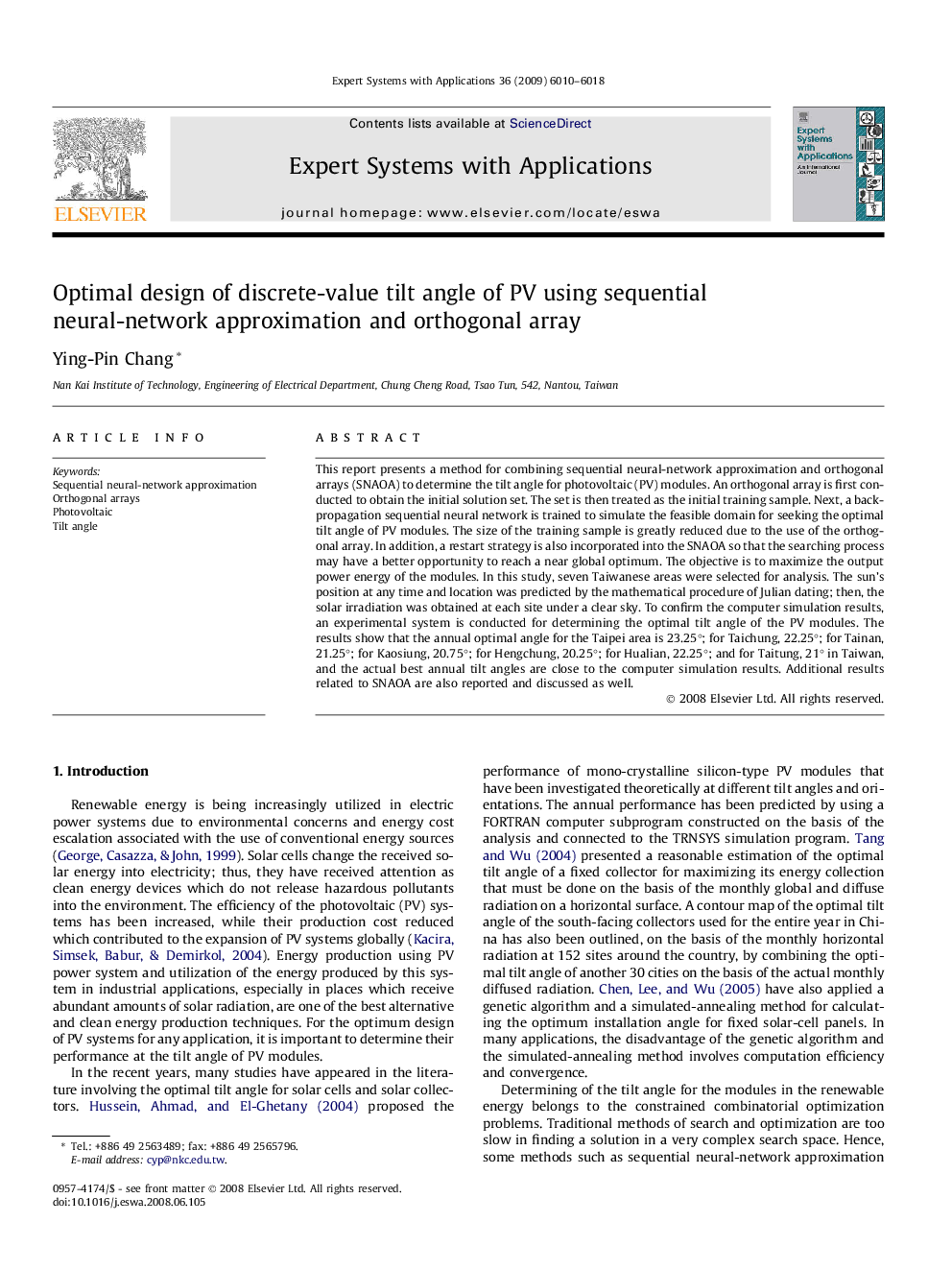| کد مقاله | کد نشریه | سال انتشار | مقاله انگلیسی | نسخه تمام متن |
|---|---|---|---|---|
| 384515 | 660848 | 2009 | 9 صفحه PDF | دانلود رایگان |

This report presents a method for combining sequential neural-network approximation and orthogonal arrays (SNAOA) to determine the tilt angle for photovoltaic (PV) modules. An orthogonal array is first conducted to obtain the initial solution set. The set is then treated as the initial training sample. Next, a back-propagation sequential neural network is trained to simulate the feasible domain for seeking the optimal tilt angle of PV modules. The size of the training sample is greatly reduced due to the use of the orthogonal array. In addition, a restart strategy is also incorporated into the SNAOA so that the searching process may have a better opportunity to reach a near global optimum. The objective is to maximize the output power energy of the modules. In this study, seven Taiwanese areas were selected for analysis. The sun’s position at any time and location was predicted by the mathematical procedure of Julian dating; then, the solar irradiation was obtained at each site under a clear sky. To confirm the computer simulation results, an experimental system is conducted for determining the optimal tilt angle of the PV modules. The results show that the annual optimal angle for the Taipei area is 23.25°; for Taichung, 22.25°; for Tainan, 21.25°; for Kaosiung, 20.75°; for Hengchung, 20.25°; for Hualian, 22.25°; and for Taitung, 21° in Taiwan, and the actual best annual tilt angles are close to the computer simulation results. Additional results related to SNAOA are also reported and discussed as well.
Journal: Expert Systems with Applications - Volume 36, Issue 3, Part 2, April 2009, Pages 6010–6018